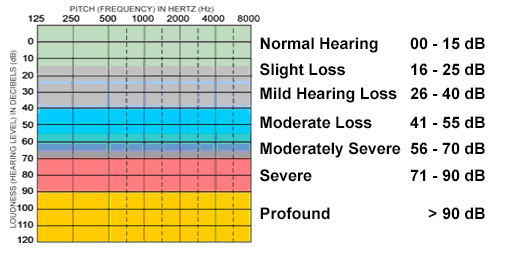Children and Youth with Special Health Needs (CYSHN)
Programs
Contact Info
Hearing Loss
Permanent childhood hearing loss is identified for about 150 infants born in Minnesota each year, with about 100 additional young children identified after the newborn period each year. Nationally, CDC data show 1.7 out of every 1000 infants screened at birth have some degree of hearing loss. This makes hearing loss one of the most common conditions present at birth. This prevalence rises to 5 per 1000 children with hearing loss by ages 3-17, due to children developing or identified with hearing loss later in childhood. The majority of babies who are deaf or hard of hearing are born to hearing parents and most often, they have no experience with hearing loss.
The term “hearing loss” is commonly used by providers to convey audiology concepts or describe results from a hearing test and is used here in that way. However, it is known that the term “hearing loss” can feel offensive to some, depending on one’s cultural perspective.
The degree of hearing loss in MDH Early Hearing Detection and Intervention (EHDI) data systems is measured in decibels (dB). For children, a slight hearing loss ranges from 16-25 dB, a mild hearing loss ranges from 26 dB to 40 dB, moderate from 41 to 55 dB, moderately severe from 56 to 70, severe 71 to 90 dB, and a profound hearing loss > 90 dB HL. The degree of hearing loss can be the same or different in each ear.

A child with a mild high frequency hearing loss will have trouble hearing and understanding soft speech, speech from a distance, and speech with background noise. With moderate hearing loss the child will have difficulty with conversations even at close distances. An audiogram, which is a graph, illustrates the type, degree, and configuration of hearing loss. To understand more about audiograms, visit American Speech-Language-Hearing Association: The Audiogram.
Early diagnosis and intervention supports language development and learning. Children whose hearing loss is identified earlier and who receive appropriate early intervention services have significantly larger vocabularies and better receptive and expressive language skills than those whose hearing loss is discovered later. This is why it is important to identify hearing loss as early as possible.
Minnesota's Early Hearing Detection and Intervention (EHDI) Program works to ensure that every baby who does not pass hearing screening has timely and appropriate follow-up. This includes an audiologic evaluation (hearing test) if needed. If a child is identified with hearing loss, Minnesota's EHDI program helps families access and connect with appropriate and timely intervention, statewide services, and needed resources.
For more information about hearing loss, visit Minnesota's Early Hearing Detection and Intervention (EHDI) Program.
Other helpful information can be found at: